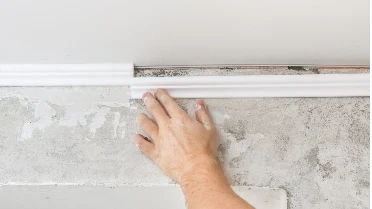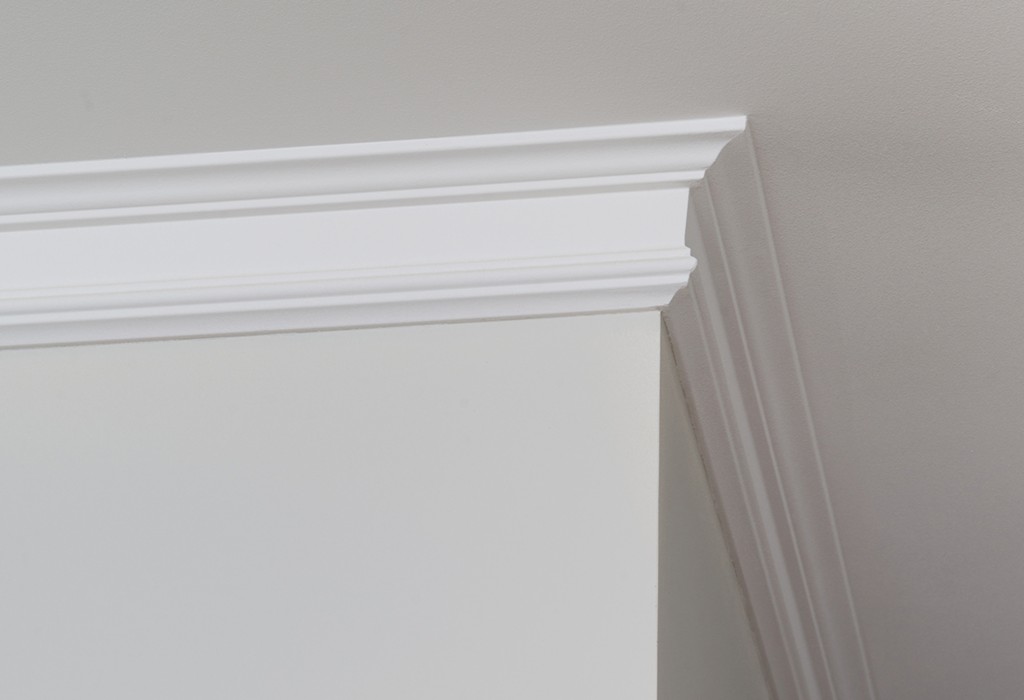In this article, we will explore some helpful tips for patching and repairing the wall after removing crown molding. Whether you’re renovating your home or simply updating the look of a room, crown molding removal can leave behind unsightly gaps and damage to the wall. But fear not! With the right techniques and a little bit of patience, you can easily restore your walls to their former glory. Let’s get started!

Preparing the Wall for Patching
Removing crown molding from the wall can leave behind a mess of holes, cracks, and damage. Before you can start patching and repairing the wall, you need to prepare it properly. This involves three main steps: removing the crown molding, cleaning and sanding the surface, and protecting the surrounding area.
Removing the Crown Molding
Carefully remove the crown molding using a pry bar or a crowbar. Start at one end and gently pry it away from the wall, taking care not to damage the molding or the wall. Once the molding is removed, set it aside for reinstallation later if desired.
Cleaning and Sanding the Surface
After removing the crown molding, you’ll likely be left with nail holes, dents, and other imperfections in the wall. Before patching these areas, it’s important to clean and sand the surface. Use a mild soap and water solution to remove any dirt or debris, and then use medium-grit sandpaper to smooth out the surface.
Protecting the Surrounding Area
When patching and repairing the wall, it’s essential to protect the surrounding area from dust and debris. Cover the floor with drop cloths or plastic sheets, and use painter’s tape to secure them in place. This will prevent any accidental damage to your furniture or flooring during the wall patching process.
Types of Wall Patching Materials
Once the wall is properly prepared, you’ll need to gather the necessary materials for patching. There are several different types of wall patching materials available, each with its own advantages and best uses. Here are some of the most common options:
Joint Compound
Joint compound, also known as drywall mud, is a versatile and easy-to-use material for patching small and medium-sized holes. It can be applied with a putty knife and dries to a smooth finish that can be sanded and painted over.
Drywall Patch
Drywall patches come in various sizes and shapes and are designed specifically for repairing larger holes or damaged areas of drywall. These patches are self-adhesive and can be easily applied to the wall. They provide a strong and durable surface for further patching and painting.
Patch Plaster
Patch plaster is a thick paste that is ideal for repairing small cracks and holes in plaster walls. It can be applied with a putty knife and dries quickly to a hard finish. Patch plaster can then be sanded and painted over for a seamless repair.
Self-Adhesive Mesh Tape
Self-adhesive mesh tape is used in conjunction with joint compound to reinforce and strengthen joints and seams. It is typically used for patching drywall, providing a strong foundation for the joint compound to adhere to.
Repairing Small Holes and Cracks
Small nail holes and cracks can easily mar the appearance of your wall. Fortunately, they are relatively easy to repair with the right techniques. Here are some methods for repairing small holes and cracks:
Filling Small Nail Holes
To fill small nail holes, simply apply a small amount of spackling compound to the hole using a putty knife. Smooth it out, and let it dry completely. Once dry, sand the area lightly to ensure a smooth finish, and then you can proceed to paint over it.
Using Spackling Compound for Cracks
For small cracks in the wall, use spackling compound. Apply the compound to the crack using a putty knife, making sure to fill the entire crack. Allow it to dry completely, and then sand the area until smooth. This will create a seamless finish that blends in with the rest of the wall.
Applying Multiple Layers for Deep Holes
If you have deep holes in the wall, such as from removing anchors or hardware, it may be necessary to apply multiple layers of patching material. Fill the hole in layers, allowing each layer to dry before applying the next. Sand the patched area between each layer to achieve a smooth and even finish.
Repairing Large Holes
Large holes in the wall can be more challenging to repair, but with the right techniques, it’s possible to achieve a seamless result. Here’s how to repair large holes in the wall:
Creating a Support for Large Holes
Before patching a large hole, it’s important to create a support to hold the patch in place. Cut a piece of plywood or drywall slightly larger than the hole. Secure it to the wall using screws or nails, making sure it is flush with the surrounding wall.
Filling Large Holes with a Drywall Patch
Once the support is in place, apply a drywall patch over the hole. Use a putty knife to spread joint compound over the patch, pressing it firmly onto the support. Smooth out the compound and let it dry. Once dry, sand the patched area until it is level with the surrounding wall, and then you can proceed to paint over it.
Smoothing and Sanding the Patched Area
After applying the patching material, it’s essential to smooth and sand the patched area to achieve a seamless finish. Here’s how to do it:
Applying a Thin Layer of Joint Compound
For small repairs, apply a thin layer of joint compound over the patched area. Use a putty knife to spread it evenly, feathering the edges to blend it with the surrounding wall. Let it dry completely before proceeding to the next step.
Feathering the Edges
To achieve a smooth transition between the patched area and the rest of the wall, feather the edges of the joint compound. Use a wider putty knife or a drywall taping knife to blend the edges, gradually decreasing the pressure as you move away from the patched area.
Sanding the Patched Area
Once the joint compound is completely dry, sand the patched area using fine-grit sandpaper. Start with light pressure and gradually increase it until the patched area is smooth and level with the rest of the wall. Be sure to remove any dust and wipe the area clean before proceeding to the next step.
Blending the Patched Area with the Wall
To achieve a seamless repair, it’s important to blend the patched area with the rest of the wall. This involves matching the texture of the wall and painting the patched area.
Matching the Texture of the Wall
To match the texture of the wall, you can use various techniques such as stippling, swirling, or using a textured roller. Experiment on a small area to find the best match for your wall. Apply the texture to the patched area, taking care to blend it with the surrounding wall. Let it dry completely before proceeding to the next step.
Painting the Patched Area
Once the texture is dry, it’s time to paint the patched area. Use a paint color that matches the rest of the wall, or if the entire wall needs repainting, choose a color that complements your space. Apply the paint in smooth, even strokes, feathering the edges to blend it seamlessly with the surrounding wall. Allow the paint to dry completely before applying a second coat if necessary.
Letting the Patched Area Dry and Sanding Again
After completing the patching, blending, and painting process, it’s important to let the patched area dry completely before proceeding. This ensures that the patch will be durable and long-lasting. Once dry, sand the patched area one final time to ensure a smooth and flawless finish.
Allowing Sufficient Drying Time
Depending on the patching material used and the humidity levels in your environment, it may take anywhere from a few hours to overnight for the patched area to dry completely. Patience is key during this step to avoid any damage to the repair.
Sanding the Patched Area Again
Once the patch has dried, use fine-grit sandpaper to sand the area again. This step helps to refine the texture and ensure a seamless blend with the surrounding wall. Remove any dust and wipe the area clean before proceeding to the next step.
Finishing Touches
To complete the wall patching and repair process, there are a few final touches to consider. These include applying primer to the patched area, painting the wall, and reinstalling trims or crown molding if desired.
Applying Primer to the Patched Area
Before painting, it’s important to apply primer to the patched area. Primer helps to create a smooth and even surface and promotes better paint adhesion. Apply the primer using a brush or roller and let it dry completely before moving on to the next step.
Painting the Wall
After priming, it’s time to paint the wall. Use a high-quality paint and apply it in thin, even coats. Feather the edges to blend it with the rest of the wall, and let each coat dry completely before applying the next. Depending on the color and coverage, you may need multiple coats to achieve the desired result.
Reinstalling Trims or Crown Molding
If you removed trims or crown molding during the wall patching process, now is the time to reinstall them. Use a nail gun or screws to secure them back in place, taking care to line them up properly. This will give your wall a finished and polished appearance.

Common Mistakes to Avoid
During the wall patching and repairing process, there are a few common mistakes to avoid. By being aware of these pitfalls, you can ensure a successful and professional-looking repair:
Not Preparing the Wall Properly
One of the most crucial steps in wall patching is preparing the wall properly. Failure to clean, sand, and protect the surrounding area can result in a patch that doesn’t adhere well or doesn’t blend seamlessly with the rest of the wall. Take the time to prepare the wall thoroughly before starting the patching process.
Using Insufficient Patching Material
When it comes to patching small holes, cracks, or even large holes, using insufficient patching material can lead to subpar repairs. Be generous with the amount of joint compound, spackling compound, or drywall patch used to ensure a strong and durable repair. Multiple layers may be necessary for deep holes or larger repairs.
Not Blending the Patched Area
Blending the patched area with the rest of the wall is crucial for a seamless repair. Failing to feather the edges, match the texture, or apply the paint properly can result in a patch that stands out and detracts from the overall appearance of the wall. Take the time to achieve a seamless blend for a professional-quality repair.
Final Thoughts
Patching and repairing the wall after crown molding removal may seem like a daunting task, but with the right techniques and materials, it can be easily accomplished. By following the steps outlined in this article and avoiding common mistakes, you can achieve a seamless and professional-looking repair. So roll up your sleeves, gather your patching materials, and soon you’ll have a beautifully repaired wall that looks as good as new.


